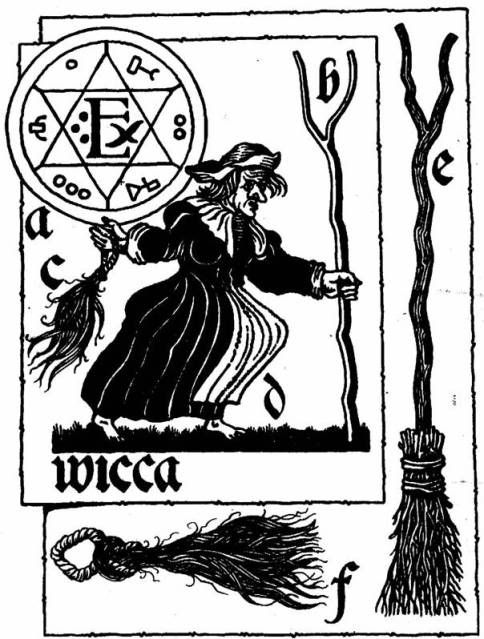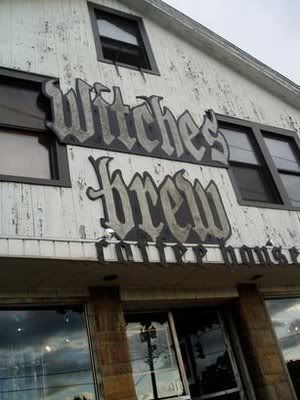
A Long Island farmer's wife is accused of witchcraft three decades before the trials in Salem
One Friday in early February, 1657, 16-year-old Elizabeth Gardiner Howell lay feverish and delirious in her bed in the small, isolated village of East Hampton. Elizabeth's infant daughter had just been taken from her breast after feeding, and she crooned a psalm at the departing child. Suddenly, the teenage mother stiffened and shrieked:
``A witch! A witch! Now you are come to torture me because I spoke two or three words against you!''
Elizabeth's father, Lion Gardiner, the leading citizen of the community, was summoned from his home across the street.
``What did you see?'' asked Gardiner.
``A black thing at the bed's feet,'' cried Elizabeth, violently flailing her arms to strike at what she saw.
By Sunday evening, Elizabeth Howell was dead. So began a chain of events that led to one of the first witchcraft trials in the American colonies, more than three decades before Salem, Mass., would be forever marked by the sign of the witch.
The accused was Goody Garlick, a woman in her 50s who lived just down the street. Her actual name was Elizabeth, the wife of Joshua Garlick, a farmer who had once worked for Gardiner on his nearby island - first called the Isle of Wight but later renamed Gardiners Island. Goody was a shortened form of Goodwife: Goodman and Goodwife were not names, but terms of address for a married person who was not of high rank - similar to Mr. or Mrs. - but also not lower class.
The death of young Elizabeth Howell got the little rural community of 33 families buzzing. Goody Simons told the local magistrates that as Elizabeth lay dying she told her that Goody Garlick was responsible. This led the justices, John Mulford, John Hand and Thomas Baker, to hold three weeks of hearings, where depositions were taken from 13 witnesses. All the direct quotations used in this account are copied verbatim from these depositions, which are in the Town of East Hampton archives.
On Saturday, Lion Gardiner's wife, Mary, who was ill herself, left her bed to visit her daughter. Elizabeth, who was the first English child to be born in New York State, put out her hand to her mother and began crying. ``Oh, mother, mother,'' she said. ``I am bewitched.''
``I asked her who she saw,'' said Mary Gardiner. ``And she said, `Goody Garlick in the further corner and a black thing at the hither corner, both at the feet of the bed.'''
Goodwife Simons testified that Elizabeth had once gotten terribly upset with Joshua Garlick for being sharp-tongued with her when she went to his farm to look for her husband, Arthur, who was there threshing. On the second night of her sickness, Elizabeth told Goody Simons, who was staying with her, to go and get Goody Garlick.
``I could tear her in pieces,'' Elizabeth told Goody Simons. ``She is a double-tongued woman! Did you not see her last night stand by the bed side ready to pull me in pieces? And she pricked me with pins.''
A number of residents told the justices stories about Goody Garlick that hurt her case. Goody Edwards said that once Goody Garlick had requested that Edwards' daughter, who had recently given birth, provide her with some breast milk, which she did. The child immediately got sick. Edwards later told this story to Goody Davis, the wife of Foulk Davis. Goody Davis told Edwards that Goody Garlick had once made the same request of her own daughter, whose child quickly died.
Here is more of the testimony:
Thomas Tallmage said that he had once been at the house of Goody Davis: [She was] speaking unto me about some accidents that had fallen out among them at the Island [Wight] as concerning the death of her child in what manner it was taken away and of an ox that had his leg broke and having reference in her speech concerning Goody Garlick as if she were a witch.
Richard Stratton said that, years earlier, he heard Goody Davis say that her own child died strangely at the Island. ``She thought it was bewitched and she said she did not know of any one on the Island that could do it unless it were Goody Garlick.''
Goody Birdsall heard Davis say that she had dressed her child in clean linen at the Island. ``Goody Garlick came in and said how pretty the child doth look. And so soon as she had spoken Goody Garlick said the child is not well for it groaneth and Goody Davis said her heart did rise and Goody Davis said when she took the child from Goody Garlick she said she saw death in the face of it. And her child sickened presently upon it and lay five days and five nights and never opened the eyes nor cried till it died.''
One person who did not testify, for whatever reason, was Goody Davis, who at one time lived on the Isle of Wight, as did the Garlicks. And as the testimony went on, it became increasingly apparent that it was this same Goody Davis who seemed to be Goody Garlick's chief accuser. Through the testimony of others, Davis accused Goody Garlick of having caused a catalog of unexplained happenings on the Island: a child that was ``taken away in a strange manner,'' a man that was dead, a fat and lusty sow and her piglets that died during the birth, an ox with a broken leg.
By the end of the hearing, the focus seemed to have shifted to Goody Davis. Jeremiah Vaile, who lived next door to the Garlicks but who had once worked for Gardiner on the island, said that Gardiner was once asked if he thought that Davis' child had been bewitched. Gardiner, who didn't testify but whose word counted for something in the town, replied testily that ``Goody Davis had taken an Indian child to nurse and for lucre of a little wampum had merely starved her own child.''
In his 1996 book, ``Imagining the Past,'' historian Timothy H. Breen took a close look at East Hampton history. He concluded that the Goody Garlick case was one of many instances of the East Hamptonites trying to establish a pecking order in their new little town.
``The investigation into witchcraft had uncovered no witch; rather, it had exposed once again a pattern of slander and defamation,'' Breen writes. ``Discontented people in East Hampton who had come to this isolated extension of New England culture looking for a fresh start and some possible bettering of their lives had in their ambition turned on each other. As the witnesses poignantly revealed, no one in East Hampton seems to have experienced more disappointment than did Mrs. Foulk Davis.''
Unable to make a decision, the three judges sent the case to Hartford, Conn., for a trial on charges of witchcraft. But for Joshua Garlick, the testimony was convincing enough. On behalf of his wife, he immediately entered an action of defamation against Goody Davis. There is no evidence that the defamation suit was ever tried.
The Hartford trial was held on May 5, in the Particular Court of Connecticut, with a panel of magistrates headed by the governor, John Winthrop. But it was anticlimactic. There may have been testimony, but the official record mentions none, although the East Hampton depositions were available.
The indictment shows how strongly the idea of a woman possessed by the devil, a witch, was embedded in the Puritan belief system:
Thou art indicted by the name of Elizabeth Garlick the wife of Joshua Garlick of East Hampton, that not having the fear of God before thine eyes thou has entertained familiarity with Satan the great enemy of God & mankind & by his help since the year 1650 hath done works above the course of nature to the loss of lives of several persons (with several other sorceries) & in particular the wife of Arthur Howell of East Hampton, for which both according to the laws of God & the established law of this commonwealth thou deservest to die.
The jury found Elizabeth Garlick not guilty, and she and her husband went home to East Hampton. They seemed to have lived peaceably, well into their 90s. Their chief nemesis, Goody Davis, appears to have died soon after the Hartford trial.

Witches Brew 311 Hempstead Tpke. West Hempstead N.Y. 11552
No comments:
Post a Comment